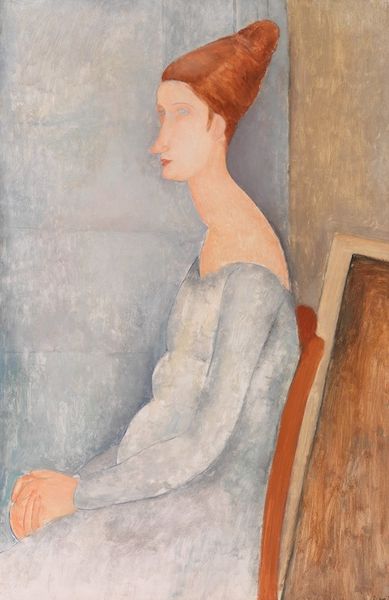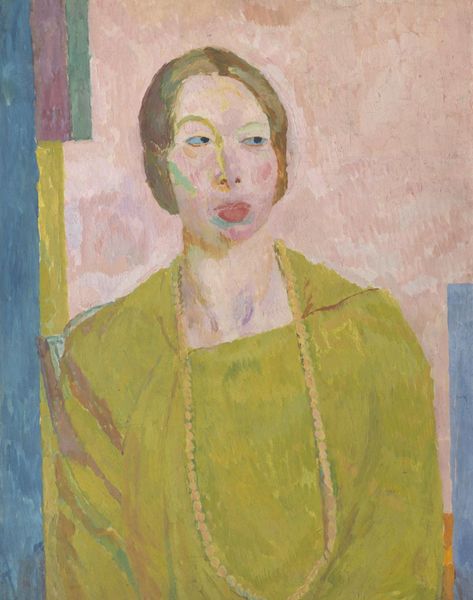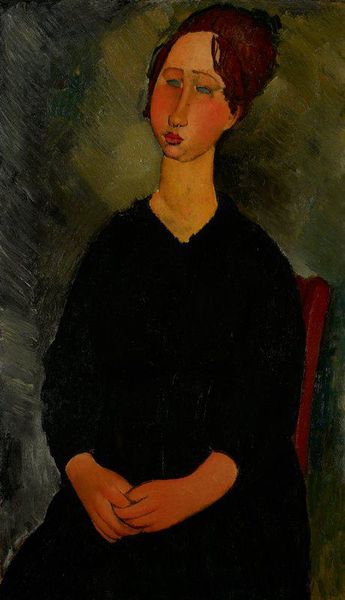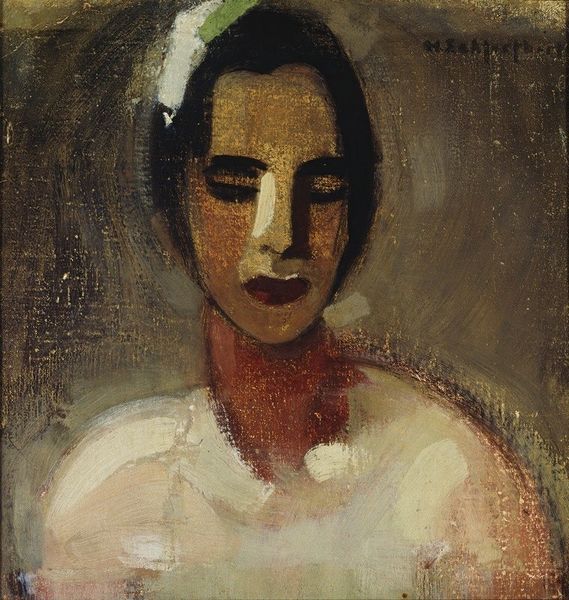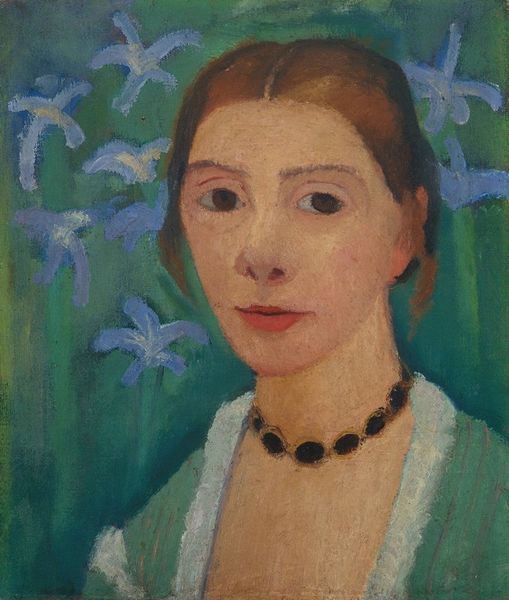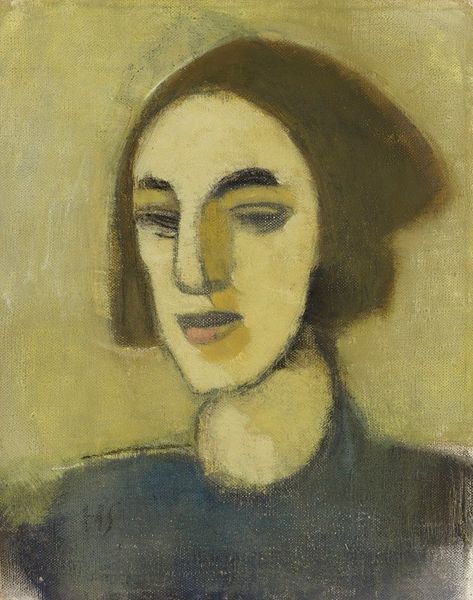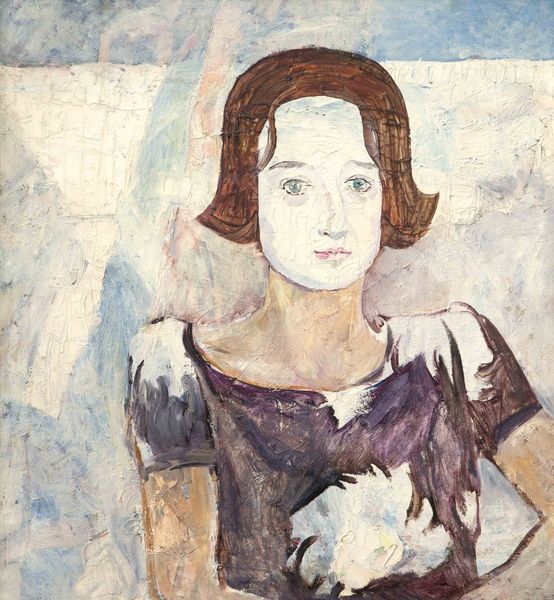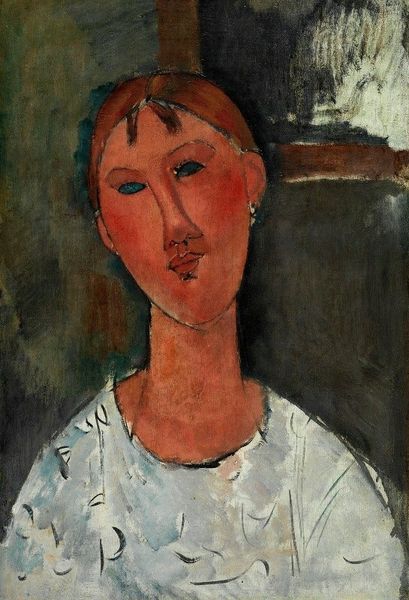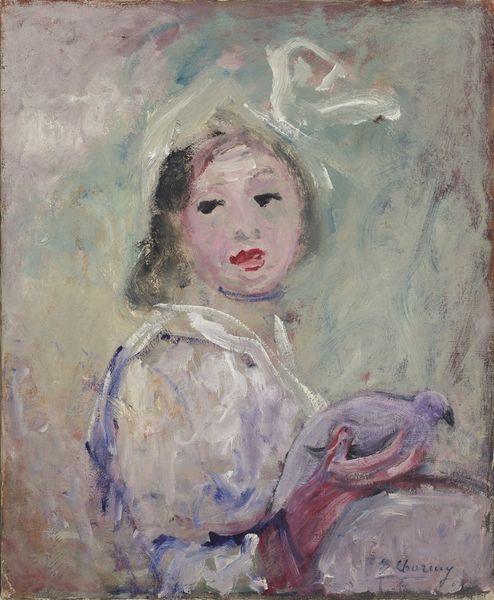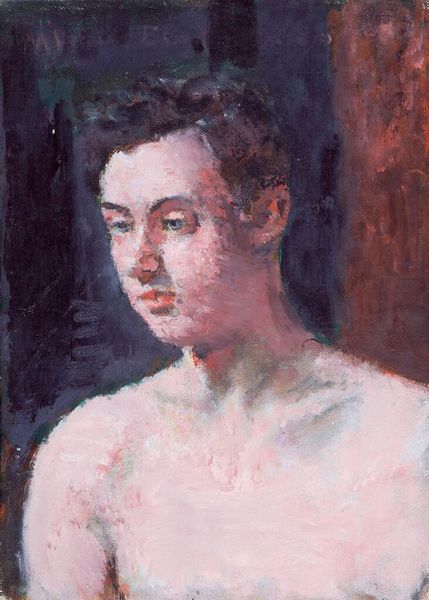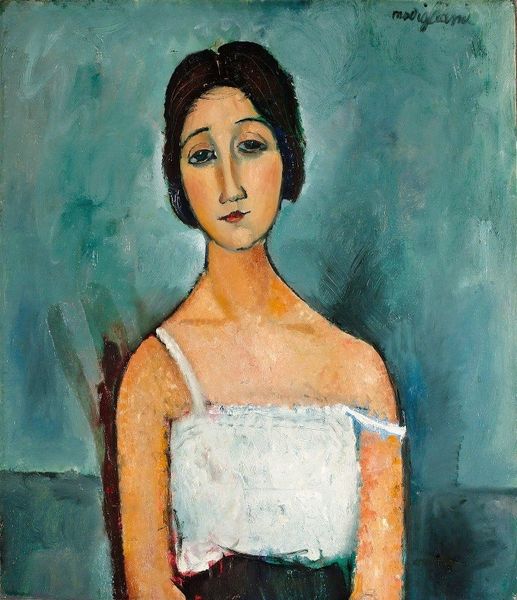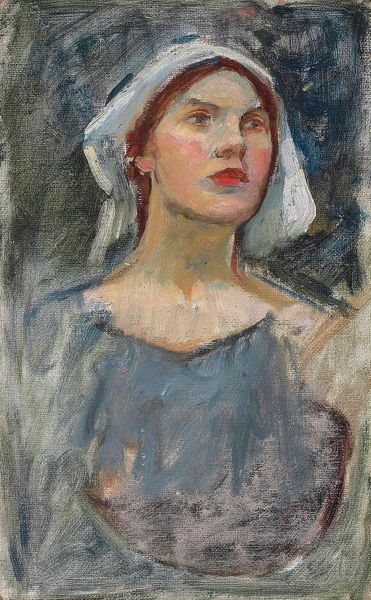
Copyright: Public domain US
Editor: This is Arthur Beecher Carles' "Portrait of Katharine Rhoades," painted in 1912 with oil on canvas. It has such a subdued, almost ghostly quality, with the soft blending of colors. What do you see in this piece beyond the surface representation? Curator: The ghostly quality you mentioned resonates deeply. Notice how Carles renders Rhoades' face, almost masking her emotions. It’s not just a likeness; it’s an exploration of interiority, filtered through the lens of modernist aesthetics. Her averted gaze evokes the Symbolist tradition where women often represented the unknowable. Editor: The lack of clear emotion is striking. Do you think the average viewer at the time would have understood or appreciated this approach to portraiture? Curator: That’s a vital question. Traditional portraiture aimed to capture social standing and character. Carles subverts this. He replaces external markers with a focus on the psychological state. This abstraction distances the sitter. Instead of being a known quantity, she becomes an emblem, representing the fragmented self in a rapidly changing world. Note also how he mutes traditional colouration to create this sense of displacement. Editor: So, rather than a specific individual, she embodies a more universal experience? Curator: Precisely. And it invites us to consider the symbolic weight of this era - a society questioning established norms, leading to introspection, even alienation, reflected in this subtly unsettling, beautiful image. Does it remind you of any similar themes across different historical periods? Editor: That’s a perspective I hadn’t fully considered. It encourages a far deeper reading of the image than I first anticipated! Curator: Indeed, seeing portraits as visual emblems can completely change the way we experience and interpret them.
Comments
No comments
Be the first to comment and join the conversation on the ultimate creative platform.
